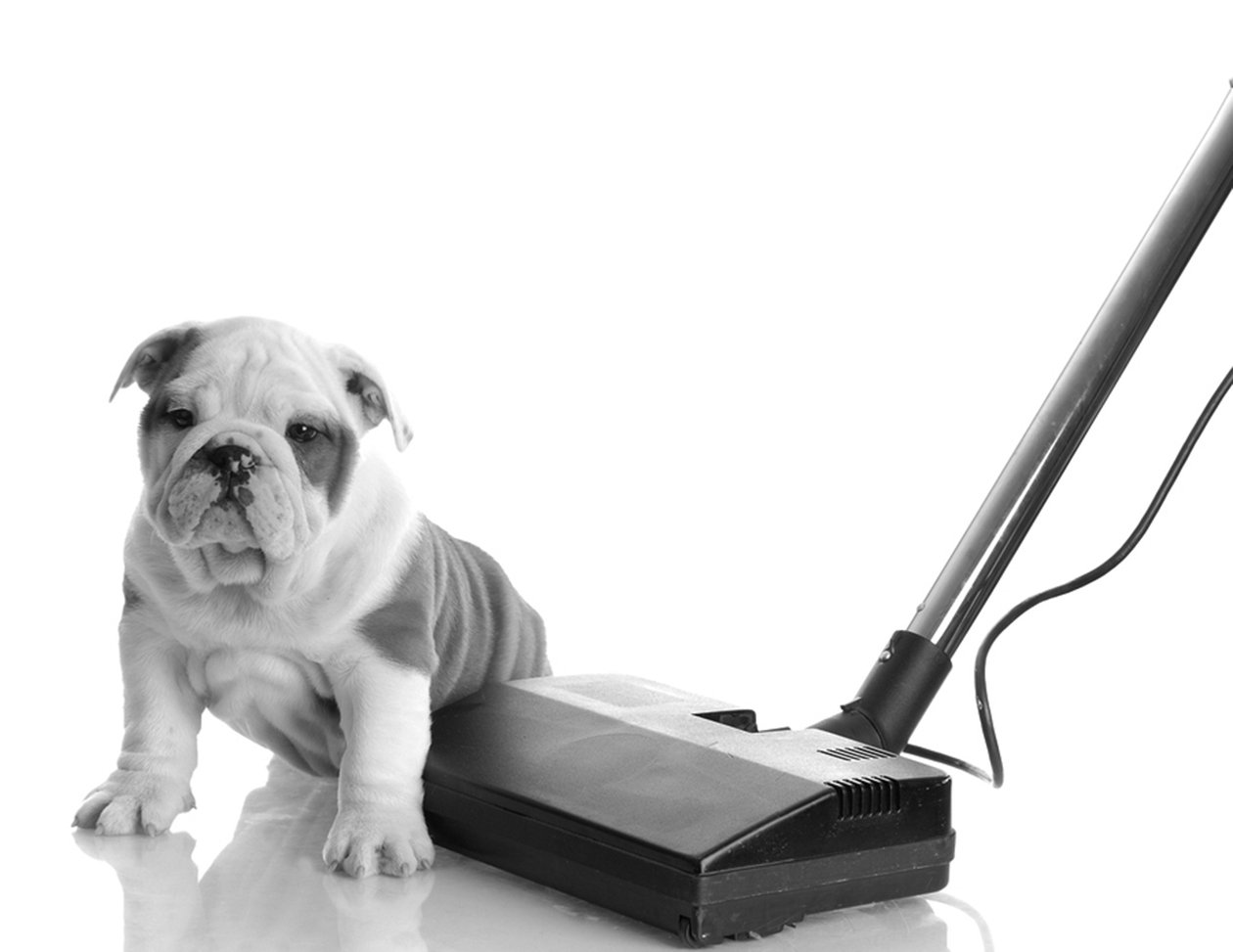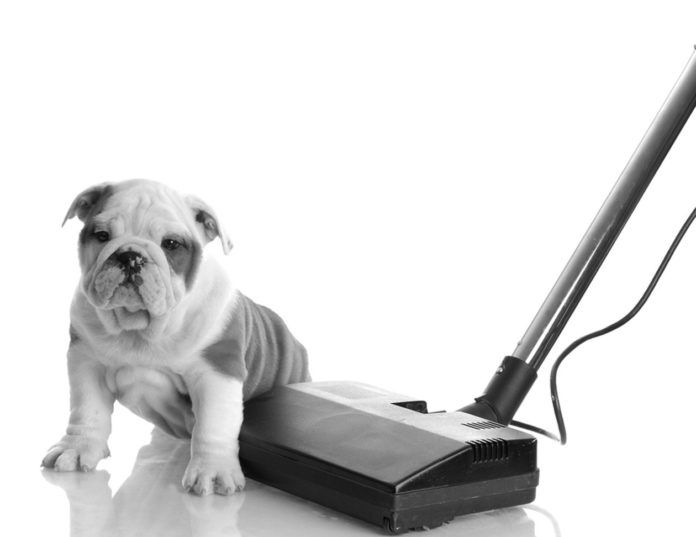[From Tufts November 2012 Issue]
Tufts Behavior Clinic Director Nicholas Dodman, BVMS, tells the story of a client whose way of making her dog stop feeling scared of car rides was to drive from Massachusetts up to Northern Maine and back. It didn’t work. “The dog was salivating, shivering, the whole time,” Dr. Dodman says. “By the time the 7-hour ordeal was over, the animal was in a dreadful state.”
BIGSTOCK

Dr. Dodman wasn’t surprised that the woman thought she was doing the right thing. There are even certain trainers, he says, who, “if a dog is frightened of the sound of a boiler going on and off, will tie the dog to the boiler. The theory is that if you leave the dog there long enough, she will go numb and become habituated. Or, if the dog is scared of walking on slippery surfaces, the trainer will drag her onto one and wait for her panic to subside.”
It’s not that “flooding,” known clinically as prolonged exposure therapy, never gets a dog over the hump, Dr. Dodman comments. “But to impose persistent, intense fear until a pet finally stops reacting out of exhaustion in order to get from point A — fear — to point B — attenuation of a phobia — is not a benign therapeutic intervention. It’s inhumane. Imagine feeling afraid of spiders and being forced into a bathtub crawling with them in order to get over it,” he says. Eventually your fight-or-flight response will run out of fuel, and you’ll perhaps deal. “But the fact that something can work is not in itself a reason to do it. You can drill people’s teeth without an anesthetic, but why would you? There are other techniques that reach the same endpoint without trauma.”
Slow and steady works better
Ultimately more effective for coaxing a dog out of a phobia is a psychological approach called systematic desensitization. While it takes more thought and planning than flooding, owners tend to prefer it because it doesn’t involve any cruelty, which goes against their deeper instincts. That is, most people who love their dogs and treat them harshly to help them get past a fear do not feel good about it at bottom. They’re acting against what their innate judgment dictates because they’ve been told it’s the right thing. Systematic desensitization, on the other hand, feels right — and will help a dog just as effectively, if not more, over the long run.
How does it work? Much as you probably expect. Let’s say your dog is afraid of car rides, like that woman’s was. You might want to start by feeding her something delectable next to the car so she associates the big “steel dragon” with something pleasant — her favorite treat, perhaps. (This works particularly well for puppies, who haven’t had a long time for the fear to become ingrained, but older dogs will respond, too.) From there, you can graduate to feeding her on the floor of the car. Another day, you might play with your dog in the car for a few minutes, or just sit in the back seat with her and cuddle — whatever makes her feel good.
Once she’s comfortable enough hanging out a little in the back seat, turn on the engine, but don’t drive. Just let her acclimate to the noise. That might take several tries over several days, and you may have to spend some of those days just going back to feeding and playing with your pet in the car but leaving the engine off. Eventually, you’ll be able to give it another go.
Once your pet can tolerate the sound, let the car roll backwards a little in the driveway, ever so slowly, to begin to adjust the dog to movement. It’s a lot for your pet to deal with, because now you’ve moved from the back seat to the front.
Finally, when she’s ready, drive — around the block. Provide lots of praise and cooing, not sympathy (“oh, you poor thing”) if she’s having a tough time because that will only reinforce the idea that she’s going through something awful. Words of encouragement and admiration must carry the day. Again, this part may be two steps forward, one step back.
When your dog can tolerate your driving, take her on a short hop that ends with a wonderful experience — a romp in her favorite park, or a visit to a friend of yours who adores her and loves to give her treats. Over time, you will have adjusted your pet to the point that car rides will have lost their fearful hold on her.
Apply systematic desensitization for all three types of fear
Fear of car rides comes under the heading of “Situational Fear.” Another common type of situational fear is separation anxiety, which, as you might expect, can be treated by what is called “the planned departure technique” in which the dog is left alone for incrementally longer periods of time.
It’s a similar approach with the other two kinds of fear: fear of other living creatures, including people and other dogs; and fear of inanimate things, the vacuum cleaner or thunderstorms, for example. You always want to proceed gradually rather than bombard your dog with the very thing that makes her feel scared.
Reintroduce her to what frightens her in a structured way, instilling confidence as she begins to cope and not exhibiting sympathy if she cowers. As before, she will misinterpret sympathy as an understanding from you that what she has to deal with is simply not tolerable. (Not showing sympathy doesn’t mean not being nice and petting your dog if she needs it; it just means acting calmly rather than letting her know through your tone that you feel bad for her — which of course you do, but exhibiting that won’t help her.)
With thunderstorm phobia, the solution might be to take your dog to the basement when the thunder starts clapping in order to minimize the sound or draw the blinds or curtains while playing some white noise and turning on bright lights to drown out the effects of the storm. Also, distract your pet by playing fetch or some other game with her. The next time, you might be able to open the curtains a little and play the white noise at a lower volume, and so on. In very severe cases, you can buy a recording of storm sounds — thunder, wind, rain pounding on the roof — and play if softly at first while frolicking with your dog, then work up from there. (Note: Thunderstorm phobia is hard to treat because it requires desensitizing a dog simultaneously to the many different components of the storm: lightning, thunder, rain, darkening skies, changes in barometric pressure, and static fields. It may require treatment with medication. See sidebar on page 6.)
If, say, your dog is afraid of people, the way to get her over the hump is not to let people keep coming over to her and petting her. It may be your inclination to be friendly, but for whatever reason, your dog feels distrustful, so immersing her in social situations is not going to help. Instead, if people ask whether they may pet your dog, say no, explaining that that would make her nervous. You don’t need to apologize. You can give the person a food treat to drop at your pet’s feet while the two of you are talking, but ask the person not to stare at your dog, which she will perceive as a threat. (The food tossing is called counter conditioning, which is often paired with systematic desensitization.) Over time, your dog will come to realize that people are not so bad and, in the interim, she will know that you are protecting her from what she perceives as great harm. That will strengthen her bond with you and allow her to trust your take on things more.






This is a very informative post! Here’s a YouTube video with relaxing sounds that might help dogs living in urban environments: [https://www.youtube.com/watch?v=44TZNCoLcxY].